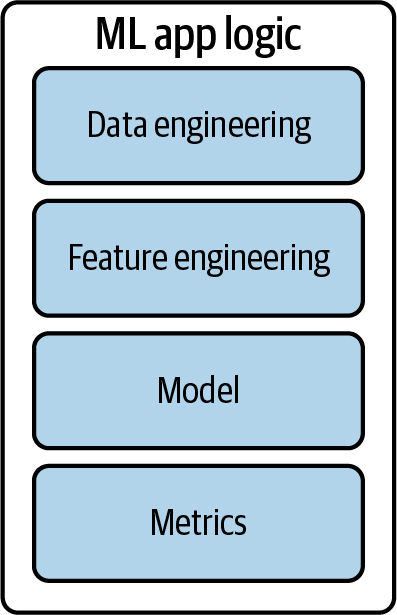Chapter 7. Model Deployment and Prediction Service
In Chapters 4 through 6, we have discussed the considerations for developing an ML model, from creating training data, extracting features, and developing the model to crafting metrics to evaluate this model. These considerations constitute the logic of the model—instructions on how to go from raw data into an ML model, as shown in Figure 7-1. Developing this logic requires both ML knowledge and subject matter expertise. In many companies, this is the part of the process that is done by the ML or data science teams.

Figure 7-1. Different aspects that make up the ML model logic
In this chapter, we’ll discuss another part in the iterative process: deploying your model. “Deploy” is a loose term that generally means making your model running and accessible. During model development, your model usually runs in a development environment.1 To be deployed, your model will have to leave the development environment. Your model can be deployed to a staging environment for testing or to a production environment to be used by your end users. In this chapter, we focus on deploying models to production environments.
Before we move forward, I want to emphasize that production is a spectrum. For some teams, production means generating nice plots in notebooks to show to the business team. For other teams, production means keeping your models up ...
Get Designing Machine Learning Systems now with the O’Reilly learning platform.
O’Reilly members experience books, live events, courses curated by job role, and more from O’Reilly and nearly 200 top publishers.

